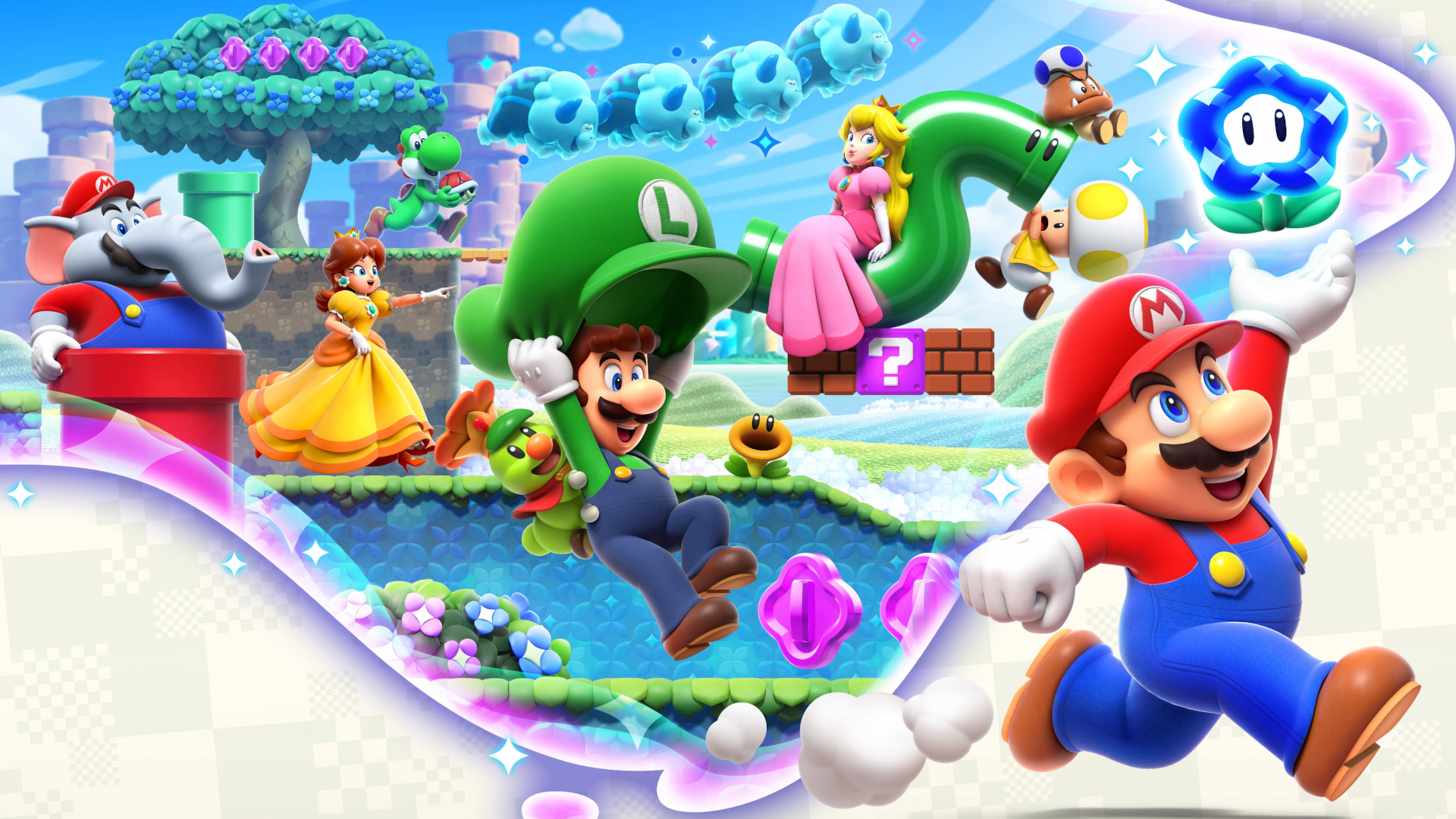Super Mario Bros Wonder devs were allowed "to prioritize content over schedule" - so they ended up with 2,000 sticky notes of inspiration
The next 2D Mario game is quite the departure for Nintendo as well

Ever since its initial announcement, Super Mario Bros. Wonder has captured the attention of long-time fans and newcomers for its rich and highly animated visual style. While it is a return to classic 2D Mario, it also looks to be a more exciting and visually distinctive take on that classic set-up - and according to the devs at Nintendo, making a large departure from the previous games was the intention.
In a recent Ask the Developer post on Nintendo's official site, the creative team at Nintendo EPD spoke about the unorthodox development process for Super Mario Bros. Wonder, which allowed the devs to experiment, build new technology, and not worry about hitting a schedule.
On the surface, Super Mario Bros. Wonder certainly looks to be a visually stunning departure from games such as the New Super Mario Bros games. It also turned out to be a departure from the established development process, with the creators spending a lot of time rethinking a 2D Mario game and how best to convey its vibrant and dynamic world.
During the developer Q&A, Super Mario Bros. Wonder game designer Koichi Hayashida spoke about how the game's development differed from other entries in the series. After work on Super Mario Maker 2, the development team felt a change was needed for the next game, and they began an unorthodox development process. This also meant building a new 2D Mario engine from scratch to convey the game's vision better.
"Yes, I remember [Shiro] Mouri-san saying during the early stages of development that we shouldn't use the same game engine as in the New Super Mario Bros. series but rather create a new game engine that would serve as a foundation for future 2D Mario games," said Hayashida. "Thankfully, [Takashi] Tezuka-san also told us to prioritize content over schedule."
According to Hayashida, the number of ideas they had when making ballooned over the extended creative period - so much so that their wall of stick notes of ideas were over 2,000. In a follow-up, producer Takashi Tezuka stated that they spent more time developing and finding the creative angle for Wonder than any other recent 2D game.
"We wanted to create a game with much more to offer than ever before, so this time, we didn't set a fixed period for development, which is usually decided before we kick off," said the producer. "To create something truly enjoyable, we decided to take our time and dedicate ample budget for development without having to worry about the production schedule. So, at first, we only had a small group working on the development."
So far, the more enegized visual style and exuberant pace of Wonder show off this creative breakthrough that Nintendo had following the extended development time on the game. It's a wilder and weirder Mario game, and that looks to be just what a new 2D Mario game needed.
To learn more about the game, check out our final Super Mario Bros Wonder review.
Weekly digests, tales from the communities you love, and more
Alessandro is a freelance writer and editor based in the San Francisco Bay Area who has covered the games, tech, and entertainment industries for more than 13 years. Having previously worked at GameSpot, CNET, and various other outlets writing features and coordinating event coverage, Alessandro enjoys playing games on PC, but also gives plenty of time to his Nintendo Switch. You can find him on various socials at @afillari.



